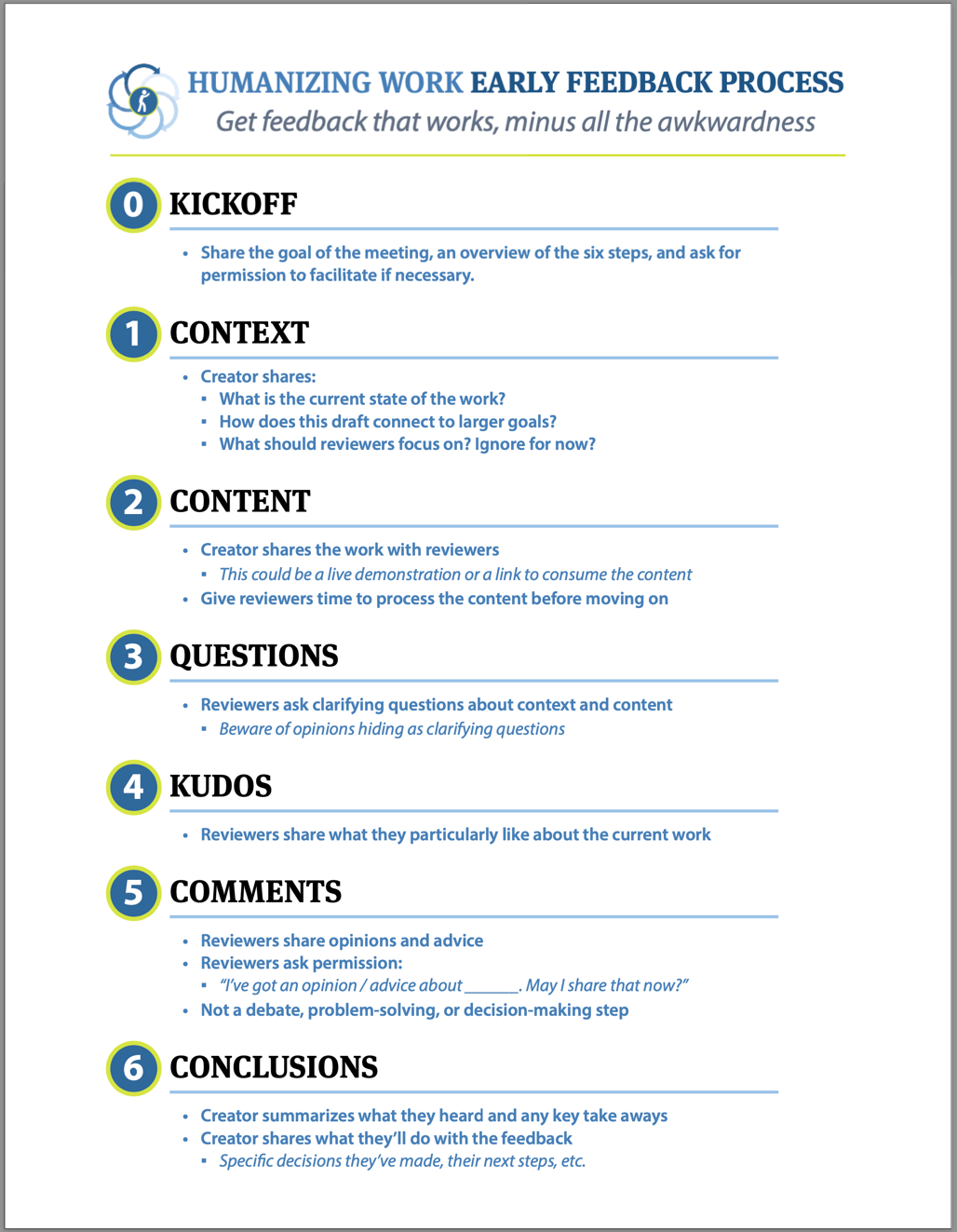In March, we published a Humanizing Work Show episode about the approach we’ve developed for getting feedback on work-in-progress. It’s a structure for a feedback conversation that makes it fun and useful.
As Peter said in the episode:

Getting early feedback on an idea used to make me feel uncomfortably vulnerable, so I’d avoid doing it. But using this feedback approach has almost completely erased that concern for me. We’ve seen the same on our team and with our clients. It’s been a huge breakthrough. Getting early feedback was always awkward and rarely that useful. Now it’s pretty easy and generating great results.
We’ve been using this approach for course updates, marketing copy, infographics, all the different kinds of creative artifacts we produce in our business.
But we’ve also noticed we often want feedback but it doesn’t feel like it warrants a meeting. And we’ve heard something similar from our clients. Sometimes, you just need quick feedback in a code pull request or on a document shared on Slack.
Can the Humanizing Work Early Feedback Process help with lightweight, asynchronous feedback? We’ve discovered that it can, and here’s how…
When one of us wants to get lightweight, asynchronous feedback on something, we post a Slack message or send an email to the team. In the message, we give context for what we’re sharing (step 1 in the feedback process) and we attach or link to the work-in-progress (step 2).
Those of us who are giving feedback still use the questions/kudos/comments pattern but in an email or Slack reply (steps 3-5). Starting with clarification questions and kudos slows us down and keeps us from jumping straight to what we’d change. Then, when we get to advice or opinions, they’re a bit more considered, a bit more thoughtful.
(We don’t ask “may I share that now?” in the async version. If getting feedback feels vulnerable enough to benefit from that pattern, that’s a signal you’d be better off having a meeting than sending a message.)
Finally, the person who sought feedback posts a message sharing what they heard in the feedback and what they’re going to do next (step 6).
This approach isn’t taking us any longer than the unstructured async feedback we used to do. In fact, it’s often faster because each move is more thoughtful and there are less misunderstandings.
Next time you need to get feedback on work-in-progress, give this a try. Use the meeting structure we describe in the episode if it’s something important or sensitive. Use this async approach if you just need some quick information. You can download a pdf of our Early Feedback Process by completing the short form below. And let us know what you use it for and how it goes!
Download the Early Feedback Process
Last updated